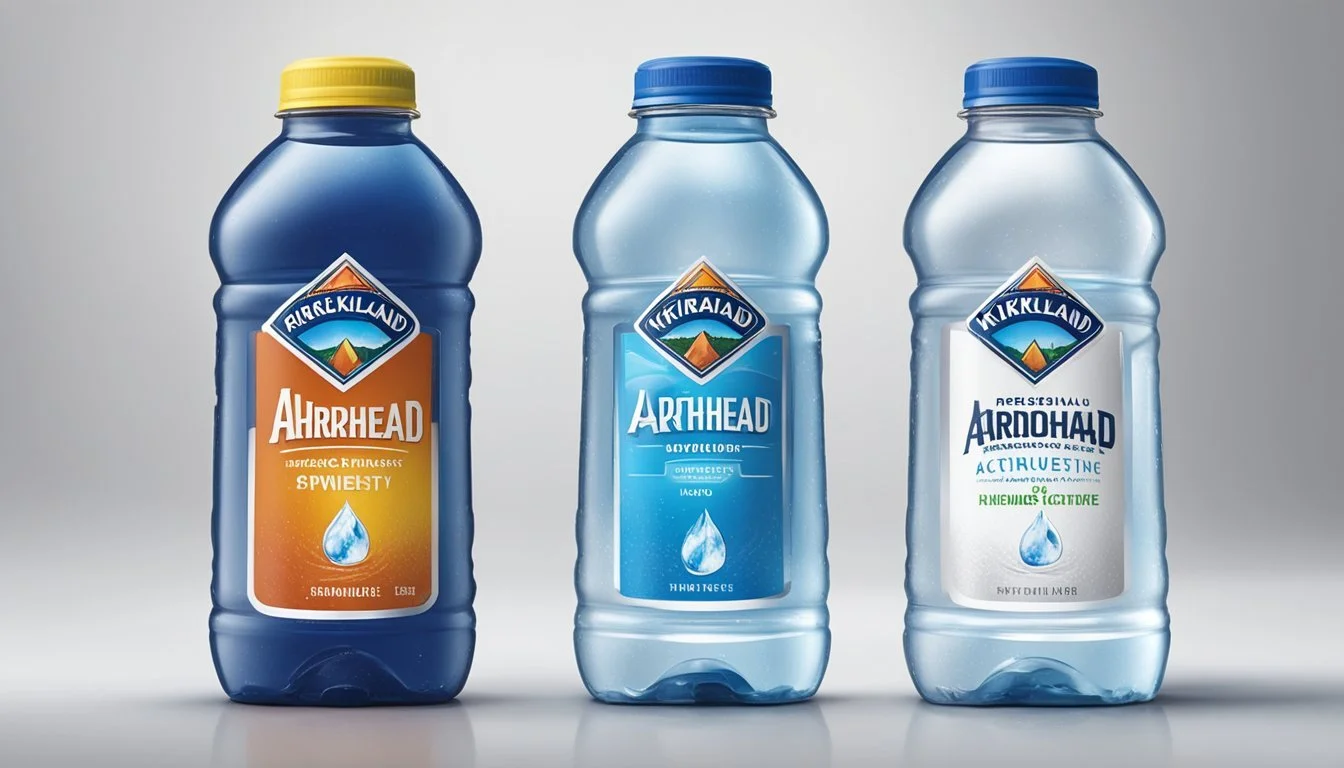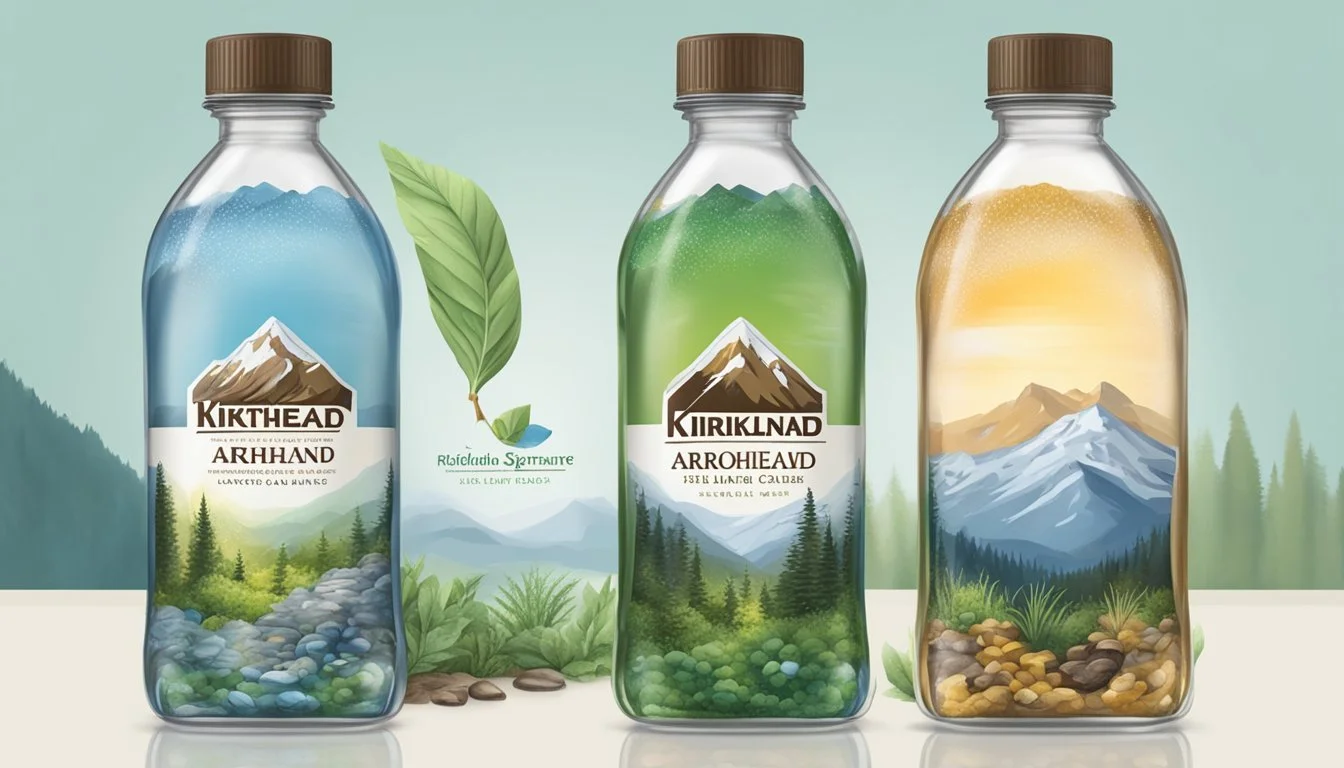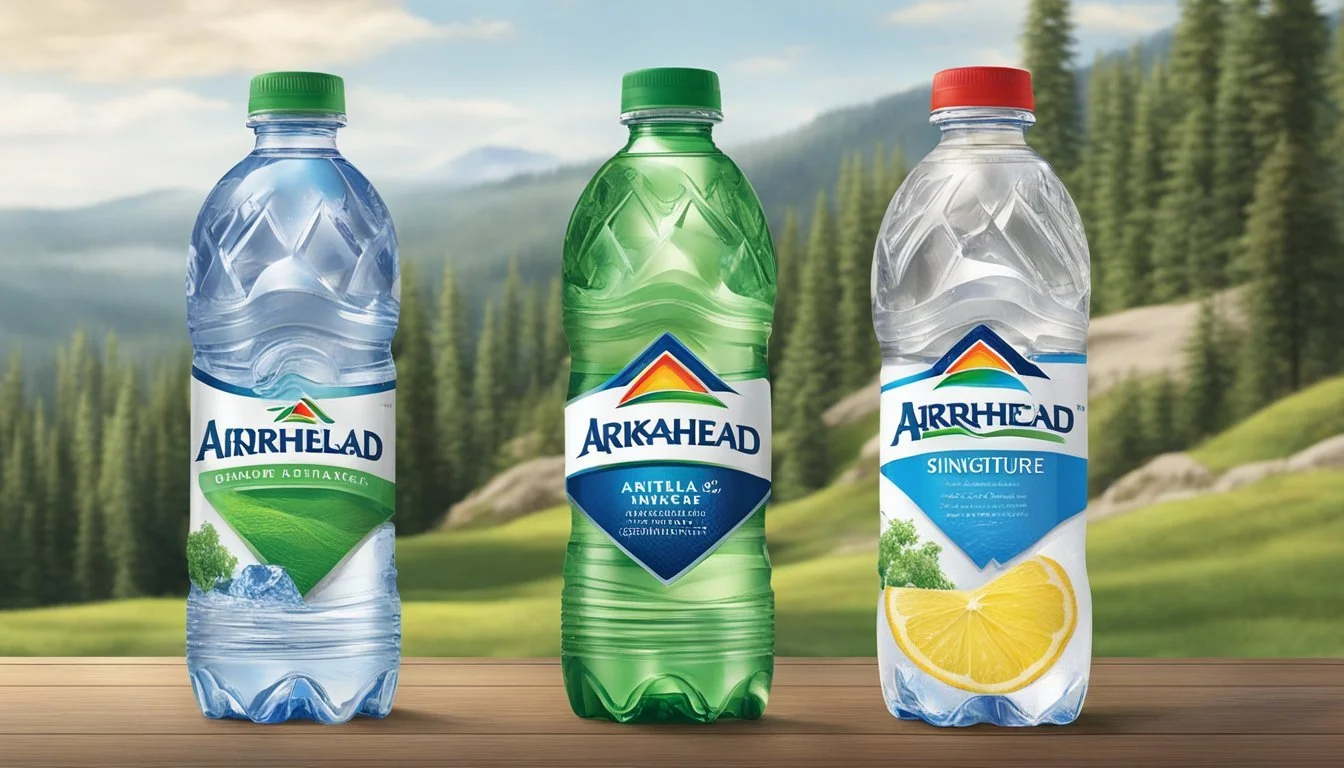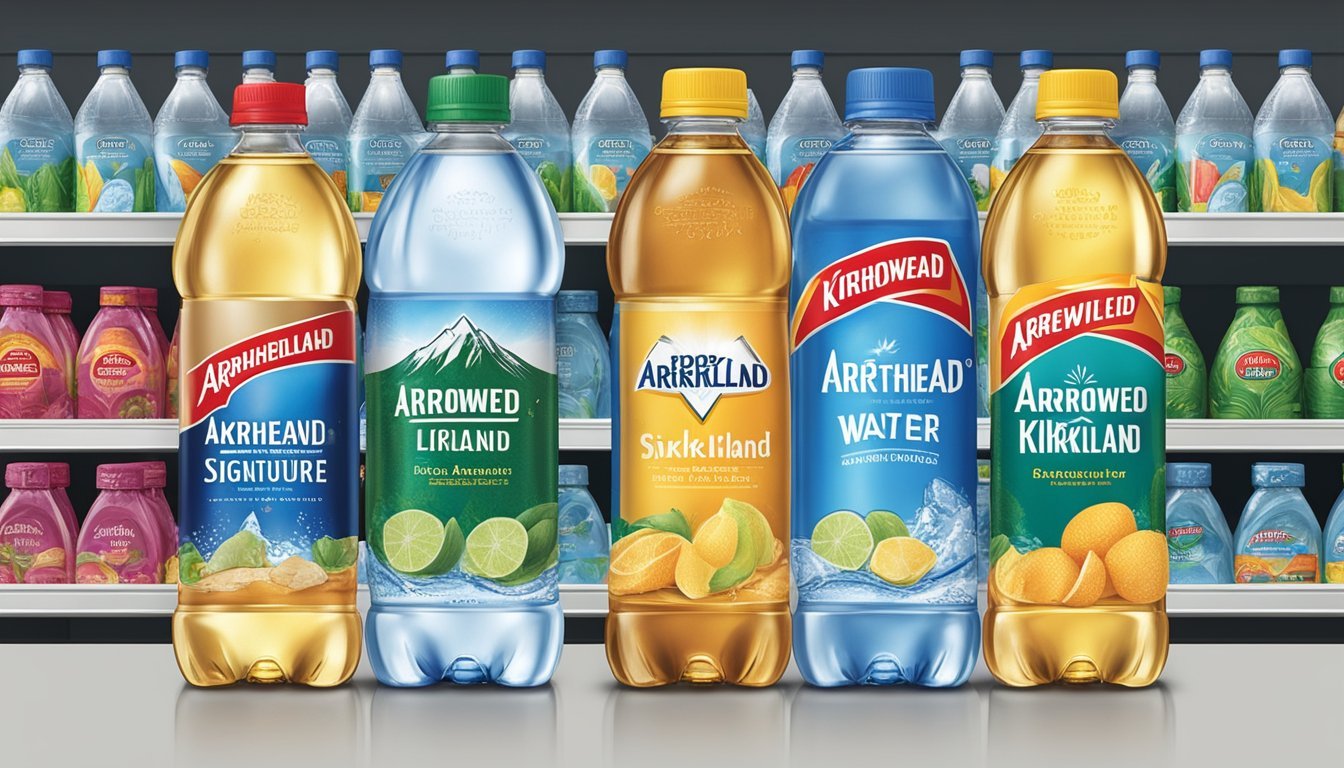Arrowhead vs. Kirkland Signature
Which Bottled Water is Better for Quality and Value?
When choosing between Arrowhead and Kirkland Signature bottled water, some key differences set them apart. Kirkland Signature is known for its affordability and consistency, making it a popular choice for consumers looking for value without compromising on quality. On the other hand, Arrowhead, sourced from natural springs, boasts a distinct mineral taste that many find refreshing and unique.
Arrowhead harnesses the purity of multiple spring sources across the Western United States, providing a slightly varied taste profile that appeals to those who prefer naturally sourced water. Kirkland Signature, while primarily known for its cost-efficiency, ensures a clean and neutral flavor that satisfies everyday hydration needs.
Ultimately, the choice between Arrowhead and Kirkland Signature comes down to personal preference. Those who appreciate a natural spring water flavor may lean toward Arrowhead, while cost-conscious consumers who prioritize consistency might find Kirkland Signature to be the better option.
History and Brand Overview
Understanding the history and brand associations of Arrowhead and Kirkland Signature provides insight into the quality and reputation of their bottled water products.
Arrowhead's Heritage
Arrowhead is a historic water brand under the Nestlé umbrella. It has origins dating back to more than a century, specifically in 1894. Arrowhead sources its water from natural springs in the mountains of California, making it notable for its focus on natural purity.
Over the years, Arrowhead has marketed itself as committed to sustainability. This is reflected in its extensive measures in water conservation and environmental stewardship. The brand prides itself on offering crisp, refreshing water that is naturally sourced and bottled at the source. Despite facing some criticisms regarding water extraction practices, Arrowhead remains a staple in the bottled water industry.
Kirkland Signature and Costco Partnership
Kirkland Signature, Costco’s in-house brand, encapsulates the retail giant's commitment to quality and value. Costco introduced Kirkland Signature in 1995, aiming to offer its members premium products at lower prices. The bottled water under Kirkland Signature is sourced from Niagara Bottling, a California-based company known for its efficient bottling processes and commitment to quality.
Kirkland Signature's water is highly regarded for its consistent quality and affordability. It's a top seller in Costco warehouses and contributes significantly to their annual revenue. The partnership between Costco and Niagara Bottling ensures that the water meets rigorous standards while providing value to Costco members. This collaboration solidifies Kirkland Signature's place as a reliable and trusted bottled water brand.
Sourcing and Water Origination
Arrowhead Mountain Spring Water and Kirkland Signature Purified Water come from distinctly different sources, each offering unique qualities and processes that appeal to different consumer preferences.
Arrowhead Mountain Spring Water
Arrowhead sources its water from naturally occurring springs, primarily in the San Bernardino Mountains of California. This natural spring water is known for its crisp, clean taste and is often appreciated for its mineral content.
The water undergoes minimal processing, ensuring that the natural balance of minerals like calcium, magnesium, and potassium remains intact. This method helps retain the water's natural flavor and purity, which is a significant draw for consumers who prioritize natural and unaltered products.
Kirkland Signature Purified Water
Kirkland Signature Purified Water, on the other hand, is bottled by Niagara Bottling. It is sourced from various municipal supplies across the United States. This purified water goes through a rigorous process that includes filtration, reverse osmosis, and additional purification stages to remove impurities and contaminants.
The final product is a highly purified, consistent, and clean-tasting water. Unlike natural spring water, Kirkland's water doesn't rely on its mineral content for flavor, making it a neutral choice for those who prefer an unflavored and consistent drinking experience.
Comparing these two, one can see a distinct difference in both origin and treatment, offering choices that cater to respective consumer preferences for either natural spring water or highly purified water.
Water Quality and Content Analysis
Arrowhead and Kirkland Signature bottled waters offer distinct differences in terms of mineral content, pH levels, and potential contaminants. A thorough comparison highlights crucial aspects that consumers should consider when choosing between these two brands.
Mineral Content Comparison
Minerals and electrolytes in bottled water impact taste and nutritional value. Arrowhead boasts a balanced mix of calcium, magnesium, and potassium sourced from spring water. In contrast, Kirkland Signature is purified using reverse osmosis, resulting in fewer natural minerals. The added electrolytes in Kirkland aim to enhance flavor and consistency but do not match the natural mineral profile of Arrowhead.
Mineral Arrowhead (mg/L) Kirkland Signature (mg/L) Calcium 20-25 <5 Magnesium 3-5 <1 Potassium 1-2 <1
Examining pH Levels
pH levels of bottled water can indicate acidity or alkalinity, affecting taste and health benefits. Arrowhead water typically features a pH range between 6.8 to 8, leaning toward neutral to slightly alkaline. This natural pH is ideal for those seeking a balanced, refreshing beverage. Kirkland Signature water, with a pH around 6.5 to 7.5, also provides a neutral to slightly alkaline level, ensuring a clean and neutral taste. Both brands comply with FDA regulations for safe drinking water.
Presence of Contaminants
The presence of contaminants like lead, arsenic, and other impurities is a significant concern. Arrowhead undergoes regular testing to ensure compliance with EPA standards, addressing potential contaminants effectively. Kirkland Signature, sourced and processed through reverse osmosis, also maintains stringent controls to remove contaminants. Recent tests indicate that both brands stay within safe limits for harmful substances, ensuring consumer safety. Notably, Consumer Reports occasionally highlights bottled waters exceeding standards, but Arrowhead and Kirkland consistently meet health and safety benchmarks.
Filtration and Purification Processes
Examining the filtration and purification processes of Arrowhead and Kirkland Signature showcases the distinct methods each brand employs to ensure water quality and safety for consumers.
Arrowhead Filtration Techniques
Arrowhead utilizes a multi-step filtration process aimed at preserving the natural taste and minerals found in its spring water sources. The initial steps include capturing water from naturally protected springs. This ensures minimal contamination and exposure to pollutants.
Next, the water undergoes a series of micro-filtration and carbon filtration stages. These are designed to remove fine particles and organic compounds without disrupting the water's mineral content.
To further ensure safety, Arrowhead subjects the water to UV light treatment and ozonation. This method effectively kills any remaining bacteria or microorganisms, ensuring the water remains pure and safe for consumption. The result is a product that retains a refreshing taste while being free from harmful contaminants.
Kirkland Signature Reverse Osmosis
Kirkland Signature bottled water employs an advanced reverse osmosis (RO) purification process. Reverse osmosis is highly effective at eliminating impurities such as dissolved solids, heavy metals, and contaminants that might be found in tap water sources.
The process starts with pre-filtration to remove larger particles. Following pre-filtration, the water is pushed through a semi-permeable RO membrane, which traps up to 99% of dissolved salts, bacteria, and pyrogens.
Kirkland also uses a Hydro-7 purification system, which involves additional steps to enhance the quality. This includes deionization and carbon filtration to ensure the water not only meets but exceeds regulatory standards.
With its thorough reverse osmosis and Hydro-7 systems, Kirkland Signature provides water that is exceptionally pure, making it a reliable choice for those concerned about water safety and taste.
Flavor Profile and Water Tasting Notes
Arrowhead and Kirkland Signature offer distinct flavor profiles and water tasting notes that appeal to different palates. To find your preferred choice, it's crucial to explore their taste, crispness, and overall mouthfeel.
Defining a 'Pure' Taste
Purity in taste is a significant factor for bottled water enthusiasts. Arrowhead water, sourced from mountain springs, offers an earthy and mineral-rich flavor. This natural composition can result in a taste that some find refreshing, while others might consider it too robust.
Kirkland Signature, on the other hand, delivers a more neutral profile. It undergoes extensive purification processes, ensuring a taste that is clean and free of any notable aftertaste. This results in a smoother, more universally appealing flavor that can be enjoyed by a broad audience.
The neutral taste of Kirkland Signature makes it suitable for various uses, from hydration to cooking. Arrowhead's distinct taste, however, might be better appreciated by those who seek more character in their water.
Crispness and Cleanliness
Crispness and cleanliness contribute to the overall mouthfeel and enjoyment of bottled water. Arrowhead is known for its crisp, refreshing quality. This is due to the natural filtration process through rocks and soil, which imbues the water with a slight mineral tang.
Kirkland Signature emphasizes purification, resulting in a remarkably clean taste profile. This method often removes any impurities that could affect the crispness negatively. The outcome is a highly refreshing and clear mouthfeel, appealing to individuals who prefer their water to be straightforward and simple.
Arrowhead’s mountain spring origin contributes to a satisfying crispness, ideal for those who enjoy a more textured experience. In contrast, Kirkland Signature’s clean and straightforward taste is ideal for consumers who prioritize purity and simplicity in their hydration choices.
Health and Hydration Benefits
Arrowhead and Kirkland Signature bottled waters each have distinct attributes that impact health and hydration. These factors include their electrolyte content, potential contaminants, and how they affect the body.
Hydration and Electrolyte Levels
Arrowhead Mountain Spring Water sources its water from mountain springs, ensuring a natural and refreshing taste. This type of water typically contains naturally occurring minerals like calcium, magnesium, and potassium, which are essential for maintaining proper hydration and electrolyte balance.
Kirkland Signature, primarily sourced from various water sources and purified through multiple stages, may have a more neutral taste. It often includes added minerals to improve flavor and electrolyte levels. These minerals help replenish the body's electrolyte stores, aiding in maintaining fluid balance and preventing dehydration.
Both brands offer hydration benefits, but the mineral composition can make a difference. Arrowhead might provide a slight edge due to its natural mineral content, which could be more easily absorbed by the body. Kirkland Signature offers reliable hydration with its purified and fortified water.
Potential Health Concerns
Attention to health concerns is vital when choosing bottled water brands. Arrowhead may have trace elements of naturally occurring contaminants, though these are generally below harmful levels.
Kirkland Signature’s purification process aims to eliminate most concerns, ensuring the water is free from microorganisms and other impurities.
An important consideration is the presence of PFAS chemicals and other contaminants, which have been found in some bottled waters. According to reports, noncarbonated waters, like those from both brands, generally show lower levels of these contaminants compared to carbonated options.
Consumers should also be mindful of sodium content in bottled waters. While neither brand is particularly high in sodium, those on low-sodium diets might wish to compare the exact levels listed on the bottles.
In summary, while both Arrowhead and Kirkland Signature offer safe hydration, it's crucial to review their chemical testing reports periodically for any updates on potential health concerns.
Packaging and Environmental Impact
Arrowhead and Kirkland Signature both use plastic bottles but have differences in material sourcing and sustainability efforts. Each brand aims to lessen environmental impact through various policies and practices.
Bottle Materials and Recyclability
Arrowhead bottles are made from PET plastic, which is widely recyclable. Some of their product lines use 50% recycled plastic, a notable effort within the industry to promote environmentally friendly materials. Kirkland Signature also uses PET plastic, ensuring their bottles are recyclable. Kirkland emphasizes their commitment by featuring recycling symbols prominently on their packaging, encouraging consumers to participate in recycling.
Still water and sparkling water from Kirkland Signature and Arrowhead are typically bottled using the same PET materials. The recyclability of both brands' bottles aligns with standards set by the International Bottled Water Association and the federal government.
Environmental Policies and Sustainability Efforts
Arrowhead has initiated several sustainability efforts, including reducing their carbon footprint and improving water sourcing practices. They support local watershed projects and strive toward using more recycled content in their bottles. This also includes a focus on reducing emissions linked to the transportation of their products.
Kirkland Signature’s approach, marketed through Costco, also emphasizes sustainability. They are working on reducing packaging waste and improving the efficiency of their supply chain. Kirkland promotes awareness by suggesting ways in which consumers can minimize environmental impact. They focus on responsible water sourcing to ensure the protection and availability of natural resources.
Both brands have engaged in efforts to use environmentally friendly practices, though specifics differ. Arrowhead’s emphasis on local environmental projects contrasts with Kirkland's broader strategy across its product lines.
Market Positioning and Consumer Perceptions
Arrowhead and Kirkland Signature, two prominent water brands, each employ distinct strategies to capture and retain their customer base. Examining their branding approaches and levels of customer satisfaction provides insights into their market positions.
Branding Strategies
Arrowhead markets itself as a premium product, emphasizing its source in the mountain springs of California. The branding highlights purity and natural origins, appealing to health-conscious consumers seeking high-quality spring water. It is generally positioned in grocery stores and health-focused retailers like Whole Foods.
Kirkland Signature, a private label of Costco, focuses on affordability and convenience. It appeals to value-seeking customers by offering large quantities at lower prices. Its branding centers around reliability and cost-effectiveness, making it a favorite among big-box store shoppers.
Brand Positioning Focus Retail Outlets Arrowhead Premium, Natural Origin Grocery Stores, Whole Foods Kirkland Affordability, Convenience Costco
Customer Loyalty and Satisfaction
Arrowhead enjoys loyalty from customers who prioritize the quality and origin of their water, appreciating its consistent taste and perceived health benefits. The brand leverages this loyalty by maintaining high visibility in lists ranking bottled water quality.
Kirkland Signature benefits from Costco’s strong membership base. Customer satisfaction is driven by the combination of affordability and the assurance of Costco’s quality standards. Frequent positive feedback on various review platforms supports Kirkland’s reputation for delivering dependable bottled water at a great price.
Customer feedback indicators:
Arrowhead: Positive remarks on taste and quality, particularly among health-focused consumers.
Kirkland: High satisfaction rates related to cost-efficiency and consistent quality, highlighted in cost-friendly water rankings.
Regulations and Industry Standards
Bottled water must adhere to strict regulations and industry standards to ensure safety and quality. These regulations come from entities like the FDA and EPA, while certifications aim to uphold compliance and enhance consumer trust.
FDA and EPA Guidelines
The Food and Drug Administration (FDA) and Environmental Protection Agency (EPA) play crucial roles in regulating bottled water in the United States. The FDA oversees bottled water as a food product, ensuring it adheres to the Federal Food, Drug, and Cosmetic Act. Regulations include setting limits for contaminants similar to the EPA’s standards for tap water, with stricter limits on lead.
The EPA is responsible for regulating public drinking water under the Safe Drinking Water Act. This entails setting limits for various contaminants to ensure safe drinking water. While the standards for tap water and bottled water are nearly identical, the FDA's regulations are slightly more stringent for certain contaminants, making them a key player in maintaining bottled water safety and quality.
Certifications and Compliance
Certifications are another layer of assurance for bottled water quality. Organizations like the International Bottled Water Association (IBWA) provide additional guidelines and certification programs. The IBWA mandates members to meet even more rigorous standards than FDA regulations, often involving annual plant inspections and water quality testing.
Compliance with these certifications ensures that companies adhere not only to federal guidelines but also to higher industry standards. This can include regular third-party audits and strict internal monitoring systems. For both Arrowhead and Kirkland Signature, demonstrating compliance with these certifications means enhanced consumer confidence in their products.
Adhering to these regulations and certifications is essential for all bottled water brands, reaffirming their commitment to safety and quality in every bottle.
Pricing and Availability
When comparing Arrowhead and Kirkland Signature bottled water, two main factors to consider are price and where these products can be purchased. Each brand has its unique pricing structure and distribution network that affects their accessibility to consumers.
Cost Comparison
Kirkland Signature offers a significant cost advantage. At Costco, a pack of 40 bottles of Kirkland Signature Purified Water is priced at approximately $3.99. Conversely, Arrowhead Mountain Spring Water, a mass-produced brand, typically costs more for the same quantity, illustrating the affordability of Kirkland’s offering.
Brand Price (per 40 bottles) Kirkland Signature $3.99 Arrowhead Higher cost (variable by retailer)
This price disparity makes Kirkland a more budget-friendly option for consumers looking to maximize value without compromising on quantity.
Retail and Distribution Channels
Kirkland Signature water is predominantly sold at Costco, leveraging the wholesale giant’s wide distribution network. This partnership ensures consistent availability and favorable pricing for Costco members. Kirkland Signature’s market presence is thus closely tied to Costco’s retail footprint.
Arrowhead, in contrast, has a broader distribution network. It is available at numerous grocery stores, convenience stores, and online retailers throughout the U.S. and Canada. This extensive reach makes Arrowhead an easily accessible choice for many consumers, though often at a higher price point.
These differing retail strategies reflect how each brand positions itself within the market, balancing between affordability and widespread availability.
Conclusion
When comparing Arrowhead and Kirkland Signature bottled waters, several factors come into play.
Arrowhead often markets its water as sourced from natural springs, appealing to those who prefer a more natural product. Its taste has generally been well-received by consumers, who appreciate its lack of additives.
On the other hand, Kirkland Signature offers a reliably purified taste. It's widely available at Costco and known for its affordability. It does have a slight saccharine flavor to some, as noted in various reviews.
Considerations for deciding between these two brands include taste preferences and budget constraints.
For those seeking a more natural taste, Arrowhead may be the better choice.
Kirkland Signature is ideal for those who prioritize cost-effectiveness.
The bottom line: both brands have their unique pros and cons, making them suitable for different types of consumers.







